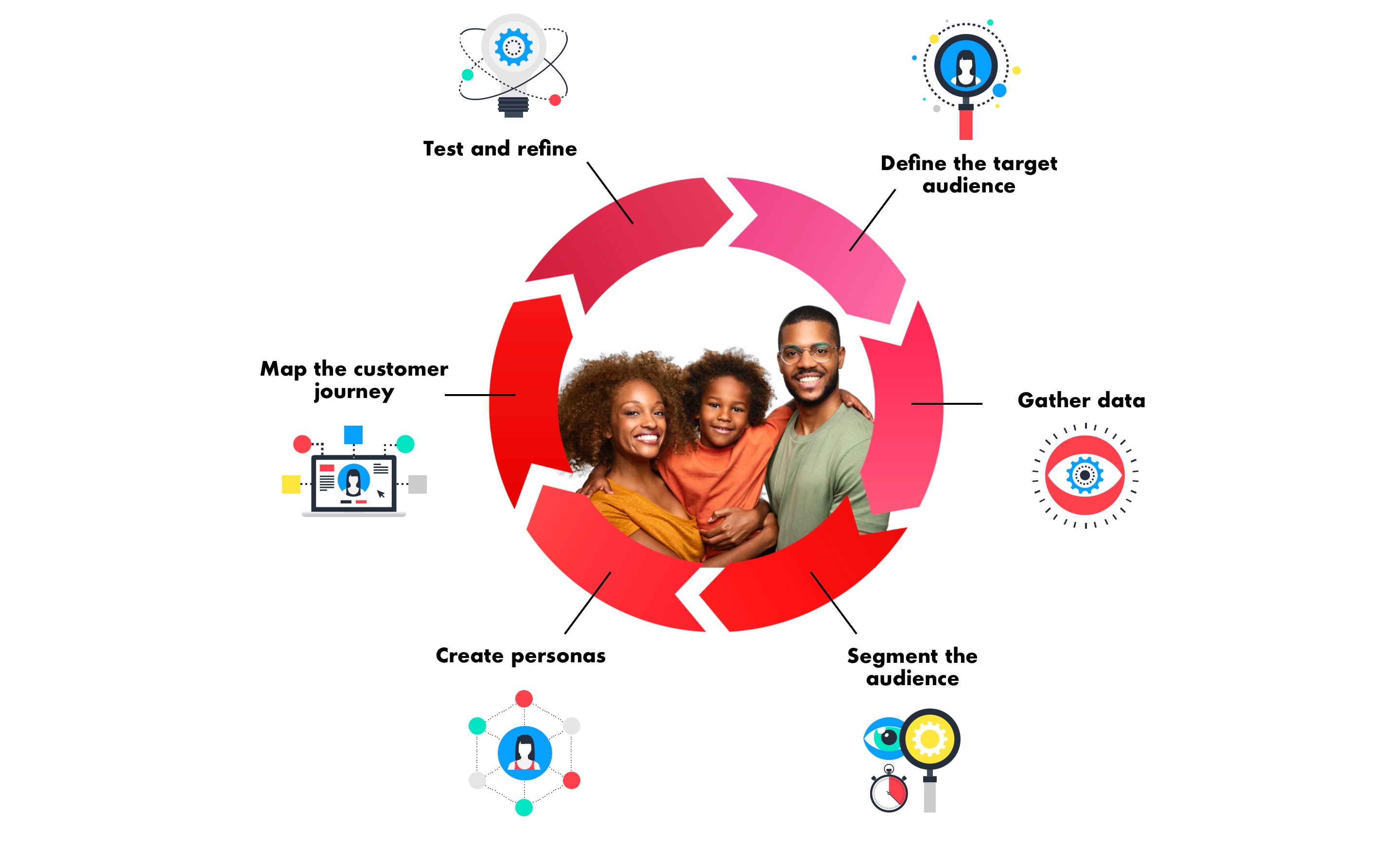What issue can we solve for you?
Type in your prompt above or try one of these suggestions
Suggested Prompt



Public Sector
Government Communications is at the Heart of CX Management. Here's Why.
Improving communications in the public sector using customer experience principles isn't just a good idea—it's essential. Citizens need access to information about government services, policies and regulations in order to make informed decisions and participate in our democracy. Since digital communications is a key way to engage with citizens, public sector agencies need a clear strategy to support customer experience management. Here’s how government agencies can communicate more effectively.
Create a plan of action
It might sound obvious that strategic planning is critical to success. However, the Organization for Economic Cooperation and Development (OECD) Report on Public Communication found that a lack of strategic planning is the leading cause of mis- and disinformation in the public sector. The reasons for this vary from communications teams trying to keep up with the fast pace of information exchange on digital channels, to fielding requests from siloed senior leaders who have different priorities for audiences and stakeholders. Communications teams have the unique advantage of having access to all organizational functions and need to harness the benefits of that position.
The key components of a comprehensive communications plan include clearly defining goals and objectives, identifying and understanding target audiences, evaluating available channels and assets, developing a cohesive messaging strategy, outlining budgets and resources, establishing timelines and, finally, measuring and evaluating results.
Once developed, the plan should be revisited annually at minimum, depending on the organization's needs and the nature of the public service. The plan needs to be evaluated regularly to ensure that it is still effective and aligned with the organization's goals and values. Regular updates can also help to keep the communication team focused and flexible enough to adjust their strategies as needed.
Know your audience
As the saying goes, “If a blog post is published, and no one is around to read it, did it make any good points?” Public sector communicators need to shift to an evidence-based, data-informed approach to understand the needs and preferences of their audiences. The growing presence of digital communications has enabled communicators to track and measure behaviors and content performance more precisely than ever.
“Starting with the end in mind—strategic goals and desired outcomes—sets the critical path for research and data analysis and helps communicators narrow the focus on valuable data and impact.”
Joe Welsh , Senior Manager Marketing Strategy and Analysis, Publicis Sapient
Leaders need to use research and data analysis such as audience segmentation, content performance, channel effectiveness, conversion metrics and social media analysis to optimize content and advance strategic goals. Performing research and data analysis in communications provides a better understanding of how people communicate and how communication influences attitudes, opinions and behaviors. This knowledge can help organizations improve their communication strategies and ultimately achieve their goals.
Make use of research
Processes like audience analysis, journey mapping and stakeholder mapping help pull relevant data on user priorities, needs and experiences over time. They offer great research tactics that help communicators better understand the roles audiences and stakeholders play and what their needs are to create the best content and strategy possible.

Lean into data analysis
Data analysis not only helps identify audiences, but also helps optimize content and channels. Monitoring engagement levels and feedback from audiences and stakeholders allows for content tailored to audience behaviors and provides personalized experiences to a targeted audience. This data analysis is used to see what content is resonating with audiences, which can then further inform future content creation and optimization. Data analysis gives communicators the information to prioritize channels for content distribution by providing data from the past and present and monitoring changes in content and performance.
Constant updates and new, emerging technologies have made analyzing data more efficient. Data visualization tools, such as Google Data Studio and Tableau, have enabled communicators to show data visually to stakeholders. Although these updates and the amount of data available can feel overwhelming, communicators must utilize these technological enhancements to support and build a more data-informed culture.
“Data analysis can lead to more informed decision-making when creating public sector communications strategy.”
Ben Pinegar , Senior Marketing Strategy and Analysis, Publicis Sapient
Analyzing historical data and industry benchmarks can help offer valuable data that informs communicators on what has worked in the past and helps measure success. These benchmarks can further help optimize content and drive changes to strategy.
Show technology leadership
Technology leadership is important in communications because it enables an organization to use the latest advancements in technology to communicate more efficiently and effectively with stakeholders. Technology advancements can provide new ways of reaching target audiences and can increase the speed and accuracy of communication. Being a technology leader in communications also helps to enhance an organization's reputation and credibility as a forward-thinking and innovative entity.
These days, government marketing is mostly paperless, meaning communication with citizens is largely digital, using digital channels of communication such as email, chatbot or social media to interact with the public. Technology should make it easier for government marketing to communicate with people and for people to access content. Constituents live across all demographics, so communication requirements will be unique depending on the audience. These could include a consumer audience or a professional or scientific audience. The National Institutes of Health, for example, must consider multiple critical constituencies—such as researchers, doctors and the general public—and build separate strategies accordingly.
Being a leader in technology means being able to understand the future of content—for example, how more people are accessing content on mobile devices. It also means balancing the budget with tech and evaluating which new product to invest in by understanding how audiences are actually engaging with tech. Ultimately, the goal of a leader in technology is to bring people together and be united for the greater good.
Closely manage stakeholders to improve communications
Stakeholder management is one of the most important actions that government agencies can take to successfully build and maintain public trust in their projects and services.
Although strategic planning and research provide the approach and framework for who to engage with and when and where to engage them, stakeholder management also includes the implementation, method and monitoring of engagements with those key groups.
Even if a government organization were to perform its services flawlessly, stakeholders would still need to understand and actually use those services for an agency to be considered effective. A good stakeholder management approach can even help an agency not only understand its relationship with stakeholders but also provide an opportunity to build goodwill with vital communities.
Not about control
Stakeholder management is not about controlling these groups but rather taking a systematic approach to educate and inform and gather input to allow for growth. Legislation like the Freedom of Information Act (FOIA) and stringent laws around personal privacy make it even more critical to have a thoughtful engagement plan in place to carefully build relationships with citizens. An ideal approach will have varied, inclusive and tailored methods of engagement based on the importance or level of influence of both internal and external stakeholders knowing that they can have both a positive and negative effect on an organization’s reputation.
Four actions to engage stakeholders
A good stakeholder management approach builds stronger relationships with key stakeholders and increases confidence in the work of government agencies. Here are four actions to take.

Create quality content
Quality information ranks higher than fair pay in the latest Edelman Trust Barometer. Agencies need to convey clear, consistent, fact-based information in an engaging way. High-quality content is critical to attracting and retaining online visitors, improving search engine rankings, building trust and credibility and promoting shareability.

Use plain language
Government communications are notorious for being filled with jargon and acronyms. This can make them difficult to understand for the average person. By using plain language and avoiding unnecessary jargon, governments can make their communications more accessible and effective.

Become a storyteller
Every public sector organization has a worthy mission and a story to tell. Good storytelling builds trust and shows the “why” before the “how” and “what”. People are naturally drawn to stories, especially stories that are relatable and connect with their experiences. By telling a good story, public sector organizations can capture their audience's attention and increase engagement. Storytelling also allows for the creation of powerful messaging that can influence public opinion and shape perceptions.

Enable connection with senior leaders
Government leaders are perceived to be the least trusted in society, so content needs to be backed up by key figures who “walk the talk” and who reinforce messaging shared by the institution or organization. Senior leaders should publish content to provide thought leadership and insights on trends and organizational challenges and opportunities. They might share case studies or success stories, insights into organizational structure and strategy or advice on leadership and management. They can also highlight achievements and milestones within their organization or participate in discussions on broader mission-related areas.
Let’s engage with citizens through effective communications
Effective communication is vital in building trust and transparency between the government and citizens. When governments communicate regularly and openly about policies and actions, citizens feel more informed, involved and empowered. This in turn will help to strengthen trust with public stakeholders, attract and retain talent, manage crises and promote democratic engagement amongst citizens. Public sector agencies that prioritize improving communications with citizens must know that customer experience principles are essential to make this happen. A clear communications strategy will be able to support customer experience management across the organization.
Related Reading
-
![]()
Article
Three Imperatives to Put Citizens at the Heart of Digitizing the Public Sector
The voice of the citizen is important and central to successful government technology programs. Here are three issues that provide the groundwork for governments to reimagine the future citizen experience.
-
![]()
Article
How to Adopt a Product Mindset to Drive Public Sector Services
Win the trust of your citizens and transform your organization toward a product mindset by following these five Public Sector pillars of success.
-
![]()
Article
How Governments Can Improve Customer Experience with Digital Accessibility
Why and how to reduce the administrative burden of your citizens and transform your agency by following these four Public Sector accessibility capabilities.








